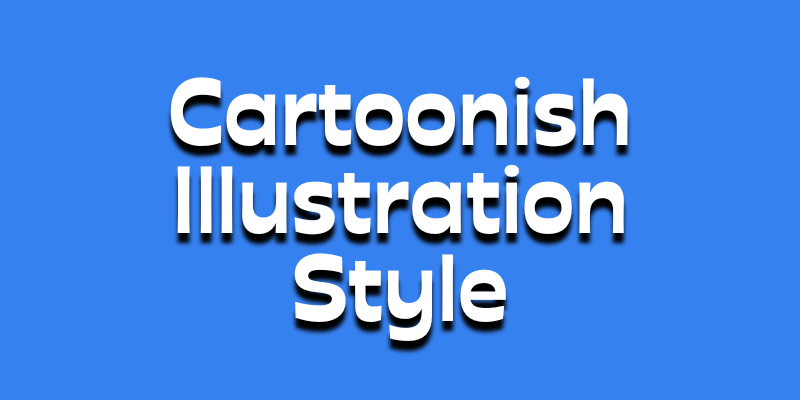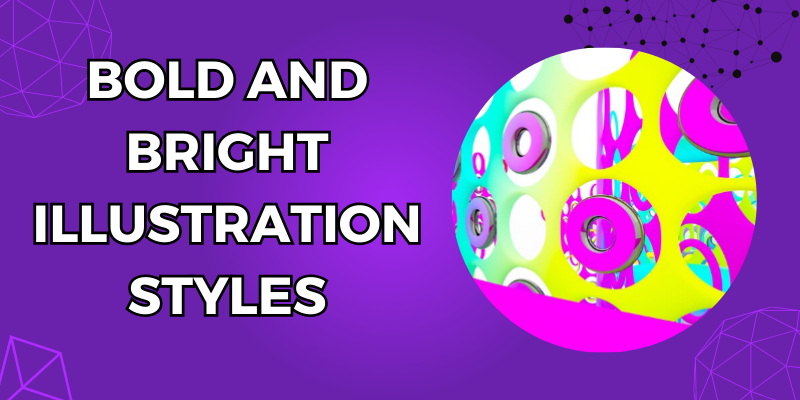
Book
In 2024, the landscape of children’s literature continues to evolve, with the visual aspect of books playing a crucial role in storytelling.
Children’s book illustration styles have become a diverse and innovative field, showcasing a range of artistic expressions that captivate and educate young readers. Each style uniquely enhances tales of wonder, adventure, and learning, from whimsical hand-drawn illustrations to sophisticated digital designs.
These illustration styles do more than beautify; they engage young imaginations and make stories more relatable. Here are the top 9 famous children’s book illustration styles in 2024 that illustrators mostly use.
Cartoonish Illustration Style
Defined by exaggerated, simplified figures and features, the cartoonish illustration style is often humorous and fun. This style works well for more lighthearted children’s stories that don’t take themselves too seriously.
Cartoonish illustrations utilize simple lines, basic shapes, and solid blocks of color. Characters tend to have oversized heads, expressive features, and minimal detail. The goal is to create figures that feel animated and convey emotion in an approachable way. Environments also take on a more playful form without an emphasis on realism.
Realistic Illustration Style
The realistic illustration style aims to depict subjects, characters, and scenes in a true-to-life, symbolic way. This style provides a high level of detail and visual accuracy, bringing the story or subject matter to life in a relatable, lifelike manner.
Realistic illustrations are often highly rendered, carefully focusing on textures, lighting, proportions, and perspective. Realistic illustrations for children’s books can make imaginary worlds more concrete and accessible.
Wondrous/Fantasy/Whimsical Illustration Styles

One of the most enchanting children’s book illustration styles is the whimsical or fantasy genre, perfect for book cover illustration. This style uses imaginative, fanciful visuals to depict magical worlds and creatures. It evokes a sense of wonder and possibility, transporting readers to new, invented places and concepts.
Illustrators working in this style can let their creativity run wild. They can illustrate magical lands, talking animals, mythical beasts, enchanted forests, and any other flight of fancy they can dream up.
Line Drawing Illustration Styles
Line drawing illustration styles comprise distinct lines and shapes, often in black and white. This can provide a minimalist, elegant style that allows readers to interpret and fill in details with their imagination.
Line drawing lends itself well to illustrating objects, architecture, nature scenes, and other subjects where clean lines and geometric shapes tell the story. The emphasis is on what’s not included as much as what is. Readers are drawn in to interpret the negative space and simple contours.
Sketch Illustration Style
The sketch illustration style features hand-drawn, rough, and unfinished-looking art that feels artistic, personal, and intimate. Illustrations in this style often focus on the main subject, with neutral or minimal backgrounds.
Sketch-style illustrations can vary from loose, gestural drawings using charcoal or graphite to more polished pen and ink drawings. But they all retain that hand-drawn, imperfect look. The roughness and rawness of the sketch style add expression and emotion to children’s book illustrations.
Abstract Illustration Style
Abstract illustration refers to artwork that uses color, shape, and form in interpretive, non-literal ways. This style encourages imaginative thinking and alternate interpretations rather than concrete depictions. Abstract children’s book illustrations provide visual interest and uniqueness that engages young readers.
Abstract styles allow the illustrator to focus on evoking feelings, ideas, and impressions rather than accurately representing reality. By stripping away literal elements, abstract illustrations invite children to interpret the images based on their perspectives and experiences. The style promotes creativity and imaginative responses in young readers.
Abstract children’s book illustration uses bold colors, geometric shapes, swirling lines, and distorted perspectives. The abstract style gives illustrators great freedom of expression. They can experiment with color combinations, irregular shapes, and inventive layouts without adhering strictly to literal representations.
Mixing and Matching Styles
Many children’s book illustrators, like the Book Writing Bureau professionals, effectively combine multiple illustration styles within a single book. This allows for greater creativity and contrast across the full story. Using a mix of styles also provides more visual interest than sticking with just one look.
Some books utilize a different style for each character or scene. This can help distinguish between fantasies, dreams, flashbacks, or points of view. Other books use a dominant overall style with sparing use of contrasting styles for emphasis or whimsy.
The key is to blend the styles cohesively so the book feels unified. For example, a story may primarily use line drawings, with occasional watercolor accents for mood.
Mixing and matching children’s book illustration styles allows artists great freedom.
Stylized and Exaggerated Illustration Style
This style manipulates reality through unusual color palettes, proportions, and perspectives. It creates illustrations that are fun, dramatic, and eye-catching. The stylized look helps create an expressive, symbolic representation rather than aiming for realism.
Illustrators may play with the sizes of different elements, enlarging some parts like eyes or hands to emphasize emotion. They also use colors creatively that depart from reality, going for a palette that sets a particular mood. Perspective is often twisted, with subjects shown from unusual or even impossible angles.
Vintage Illustration Styles
Historical artistic movements and classic design aesthetics from the past inspire vintage illustration styles. Illustrators working in a vintage style may draw inspiration from Art Nouveau, Art Deco, vintage advertisements, propaganda posters, penny dreadfuls, and other visual ephemera from bygone eras.
The hallmarks of vintage illustration include hand-drawn or hand-lettered typography, decorative borders, and imagery that evokes nostalgia. Scenes may depict idealized domestic life, romanticized nature, or dramatized historical events in soft, muted color palettes.
Vintage children’s book illustration provides a sense of time, place, culture, and artistic tradition. It allows readers to imagine themselves in another period of history.
Bold and Bright Illustration Styles

Vivid, saturated colors and high-contrast color palettes characterize bold and bright illustration styles. Illustrators in this style often opt for intense, almost neon versions of primary colors like red, blue, yellow, etc. These bold color choices aim to grab the viewer’s attention.
The minimal detail and simple compositions mean that bold and bright illustration works incredibly well for children’s books and other youth-focused media.
Conclusion:
Exploring the top 9 famous children’s book illustration styles in 2024, we see exciting visual innovation in storytelling. These styles aren’t just for looks; they’re about bringing stories to life in ways that resonate with kids today.
To make these vivid worlds a reality, many hire children’s book illustrators whose artistry turns reading into an unforgettable experience. As these illustrators continue to impress and spark imagination, they help preserve the joy and importance of storytelling for the new generation.



